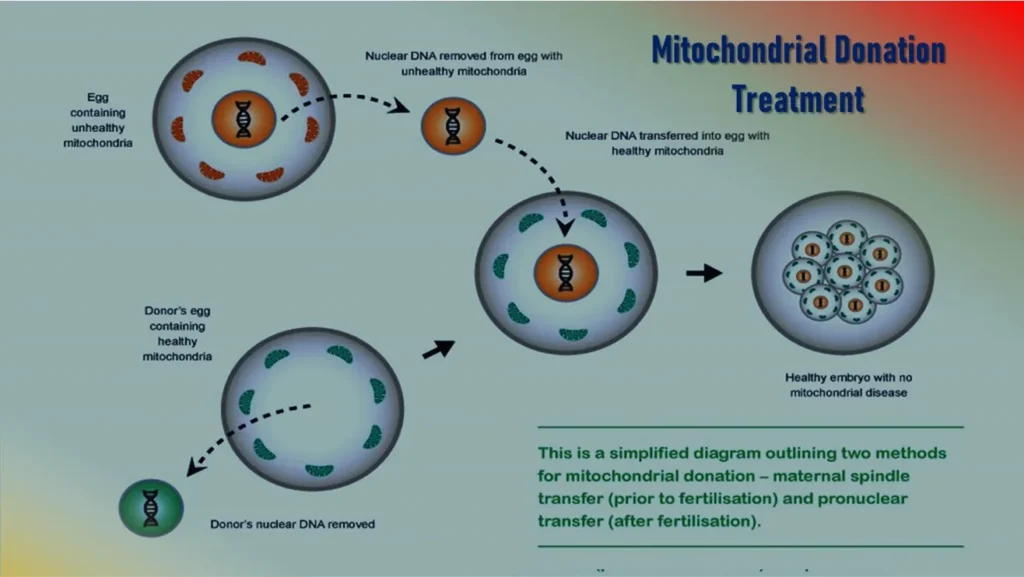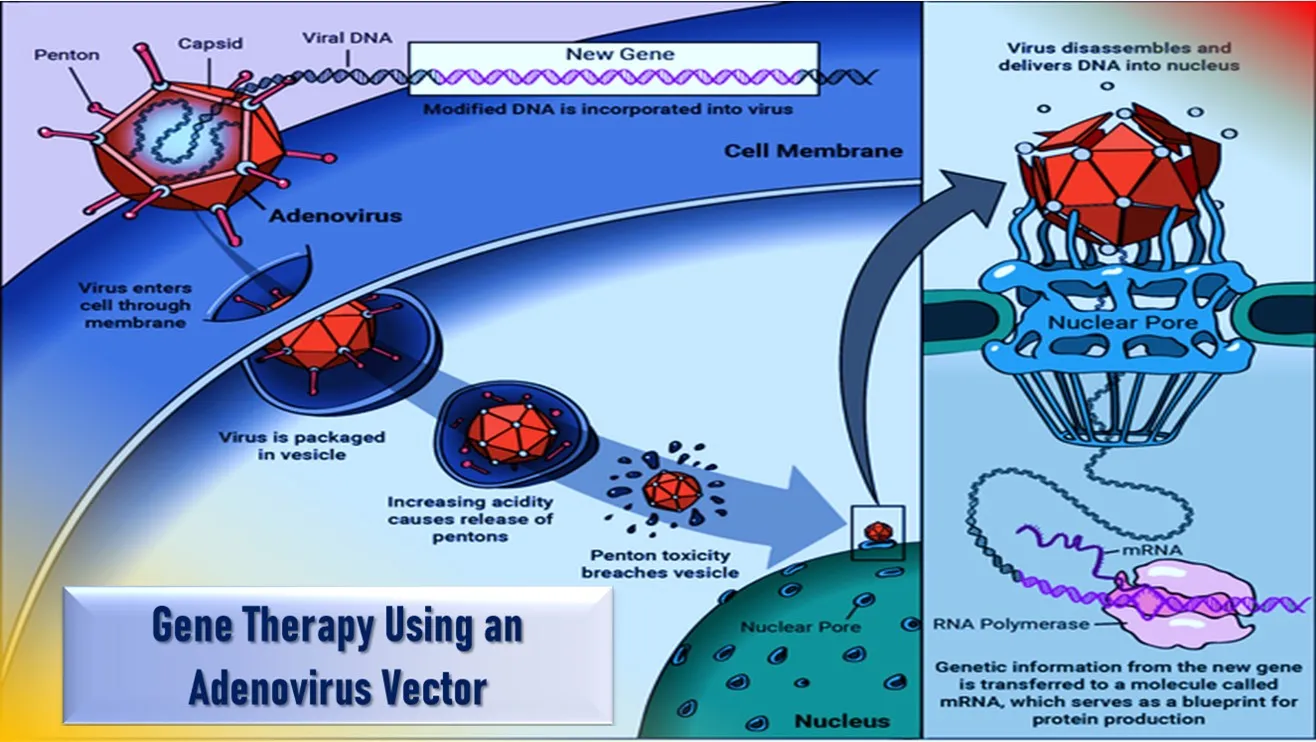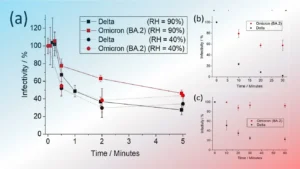In this article you can find the topic :
What is Gene Therapy? and Types, Approaches and success
What is Mitochondrial Disease? and Mitochondrial Donation Treatment (MDT) in details.
What is Gene Therapy?
Gene therapy is a technique that uses genes to treat or prevent disease. This technique allows doctors to treat a disorder by inserting a gene into a patient’s cells instead of using drugs or surgery.
Researchers are testing several approaches to gene therapy, including:
- Replacing a mutated gene that causes disease with a healthy copy of the gene.
- Inactivating, or “knocking out,” a mutated gene that is functioning improperly.
- Introducing a new gene into the body to help fight a disease.
Approach and Technique
- Gene therapy is designed to introduce genetic material into cells to compensate for abnormal genes or to make a beneficial protein.
- If a mutated gene causes a necessary protein to be faulty or missing, gene therapy may be able to introduce a normal copy of the gene to restore the function of the protein.
- A gene that is inserted directly into a cell usually does not function. Instead, a carrier called a vector is genetically engineered to deliver the gene.
- Certain viruses are often used as vectors because they can deliver the new gene by infecting the cell. The viruses are modified so they can’t cause disease when used in people.
- Some types of virus, such as retroviruses, integrate their genetic material (including the new gene) into a chromosome in the human cell.
- The vector can be injected or given intravenously directly into a specific tissue in the body, where it is taken up by individual cells.
- Alternatively, a sample of the patient’s cells can be removed and exposed to the vector in a laboratory setting.
- The cells containing the vector are then returned to the patient. If the treatment is successful, the new gene delivered by the vector will make a functioning protein.
- Non-viral methods of gene transfer have also been explored in recent years. Methods for non-viral gene therapy include electroporation, the gene gun, sonoporation, magnetofection, the use of oligonucleotides, lipoplexes, dendrimers, and inorganic nanoparticles.
Types for Gene Therapy
A. Depending upon the type of cells that are modified by the therapeutic genes:
Somatic Cell Gene Therapy
- In this type, genetic changes are directed towards somatic cells.
- As these cells are non-reproductive, the effect is not passed into future generations, making it safer.
- The disadvantage is the short duration of effects of somatic cell therapy as most tissues are be replaced by new tissues.
Germ Cell Gene Therapy
- This is the type of gene therapy, where germ cells, i.e. either sperm or ova are introduced with therapeutic genes, leading to the changes that are inheritable, i.e. changes in genes may affect future generations.
B. Based upon the technique of delivery of vectors to the target cell:
Ex-vivo Gene Therapy
- Ex -vivo gene therapy is where the defected cells are extracted out of the body and targeted with therapeutic genes.
- Once successfully modified, they are cultured ex-vivo and transferred back to the host, where now the corrected gene replicates.
In-vivo Gene Therapy
- In this modality, a vector that is capable of carrying the therapeutic gene, is used to inject host cells with normal genes.
C. The type of change brought out in the faulty gene:
Gene Replacement
- Gene replacement means replacement of defective genes with a corrected one.
Gene Addition Therapy
- Gene addition means restoration of normal function of a cell by addition of normal or functional copy of gene into the genome.
- This concept is primarily used in various gene therapy related research on cancer.
Success and Barriers
Clinical trials of gene therapy in people have shown some success in treating certain
diseases, such as:
- Severe combined immune deficiency
- Hemophilia
- Blindness caused by retinitis pigmentosa
- Leukemia
But several significant barriers stand in the way of gene therapy becoming a reliable form of treatment, including:
- Finding a reliable way to get genetic material into cells
- Targeting the correct cells
- Reducing the risk of side effects
Mitochondrial Donation Treatment (MDT)
Mitochondria are basically the powerhouses of the cells, they generate the energy, and thus are also responsible for cell function in the human body.
What is Mitochondrial Disease?
Certain defects might occur impacting on the way the mitochondria produces energy for the cells (Specially in the ‘energy-hungry’ tissues of the brain, nerves, muscles, kidneys, heart, liver), and thereby impacting cell function.
The diseases that arise out of such mitochondrial mutations are called mitochondrial diseases.
When the mitochondria are impaired and do not produce sufficient energy, that affects how the organs function, leading to a broad assortment of symptoms across the body, including brain damage, organ failure and muscle wastage.

Note: Mitochondrial diseases are only passed on by the mother.
Scientific Process
- Through an advanced In Vitro Fertilisation, the baby’s biological father’s sperm was used to fertilize the eggs from the biological mother, who has a mitochondrial disease, and a third, female donor with clear mitochondria, separately.
- Then, the nuclear genetic material from the donor’s egg is removed and replaced with the genetic material from the biological parents’.
- The final product – the egg – which has the genetic material (DNA) from the parents, and the mitochondria from the female donor, is implanted in the uterus, and carried to full term to yield a baby who will be free from the mother’s mitochondrial disease.
- The process is termed as Mitochondrial Donation Treatment (MDT).
Side Effects to the Procedure
Sometimes it is possible that a small amount of the maternal mitochondria with errors may get passed on during the procedure. While largely helpful, the procedure is not without these minimal risks.
Also Read:
Human Genome Project (HGP) and its Significance
What is Transgenic Bacteria and its applications?
What is Recombinant DNA Technology ? Applications of rDNA Technology












2 thoughts on “What is Gene Therapy and Mitochondrial Disease?”